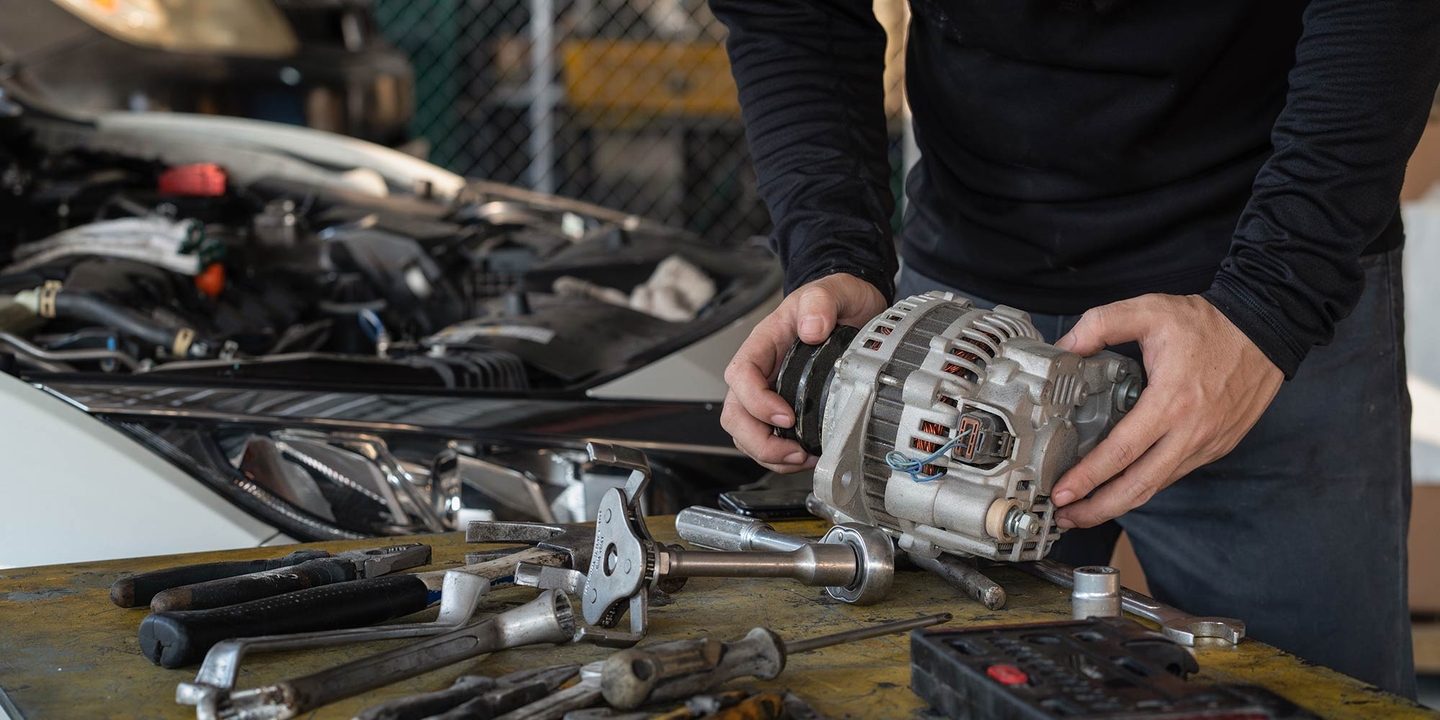When should you replace an alternator?
3 min read
A car’s alternator works with the battery to create an electrical current and turn the engine on. Over time, alternators face normal wear and tear. When this happens, the battery cannot charge completely, and you may need to explore having your alternator replaced. There isn’t a set amount of time that alternators are designed to last, but there’s a good chance you may need to have it replaced at some point between 100,000 and 150,000 miles. It’s important to note the difference between a bad car battery vs. a bad alternator.
What are the signs you need to change your alternator?
If you have a multimeter on hand, you can use it to check your alternator’s voltage level. A reading between 13.5 and 14.5 is healthy. Once the voltage reaches higher or lower levels, you may notice some problems in how your car operates. Zach Wimpey, operations manager at Craig and Landreth Clarksville, says some of the telltale signs you need to replace your alternator include: dim or very bright headlights, a consistently dead car battery, if your car stalls when driving or won’t start, and if you notice a warning light on your dashboard.
Dave McCurdy, marketing manager at Eco Driving USA, adds that a burnt rubber smell or a loud grinding noise can be another clue that it may be time to replace your alternator.
What tools are needed to change an alternator?
Before you get started, you need to have the right tools ready and purchase a new alternator to replace the old one. J.D Power reports that you’ll pay between $100 to $350 for an alternator, depending on the model. Total costs will average between $350-$900 to replace the alternator if you don’t need to change any other parts. Check your car’s manual to find out exactly what type of alternator you should buy. Don’t forget to factor in labor costs if you take your car to a mechanic to change your alternator.
To replace an alternator, you’ll need a socket and wrench set, a memory saver, gloves, and safety glasses. A multimeter isn’t necessary when changing an alternator, but it’s a helpful gadget to have on hand. You can use it to get a reading on your alternator’s voltage so you’ll know when it starts to weaken.
How to change or replace an alternator
1. Read the manual
Before you change an alternator, look at the manual to understand what your specific car’s make and model is. You may find out it’s recommended to back up the preset electronic data from your car’s internal computer. This will keep a copy of the information for you if anything gets lost while the battery is disconnected. Once you’ve figured that out, ensure your car’s engine is turned off and put on your safety gear to get started.
2. Disconnect the parts
Next, you’ll need to disconnect everything. Start with the negative cable from the car’s battery. Leaving this plugged in while you work is risky. You could get a shock, and the battery could also short-circuit. You can unplug the positive cable too if you’d like, but it’s not necessary. Loosen the car’s belt tensioner and remove the serpentine belt next. You may also want to inspect them for wear and tear to determine whether they need to be replaced.
Lastly, disconnect any other cables and bolts that are keeping the alternator hooked into the car. This includes the voltage regulator connector, the alternator’s positive cable, the nut and bolt that attach the alternator brace, and the lower mounting bolt on the alternator. McCurdy recommends taking photos of each piece before disconnecting them. You can look back at the photos for reference when you need to hook everything back up.
3. Replace the alternator and reattach the parts
Take out the old alternator, paying close attention to exactly where it sits. Then you’re ready to replace the alternator with the new one, popping it into the same position. Now you need to reattach everything. Start with everything that holds the alternator locked in place: the lower mounting bolt, alternator brace, the positive cable, and the voltage regulator connector. Put the serpentine belt and belt tensioner back into position and tighten them. If you noticed any wear and tear on your belts earlier, you could replace your belts with new ones at this point. Your final step is to reconnect the negative battery cable.
If you have a multimeter, this is the time to take it out, although it’s not an essential part of the process. It helps to measure the voltage level in your alternator. Ideally, it will be right in the sweet spot between 13.5 and 14.5 volts. That means the new alternator is working correctly, and you’re ready to start the engine and hit the road.




